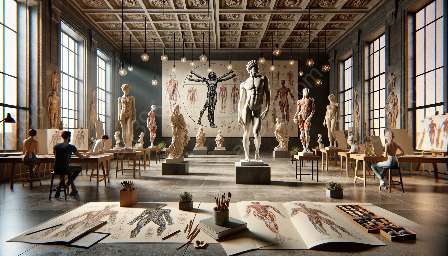Figure drawing has been an integral part of artistic expression across different cultures and historical periods. Understanding figure drawing in its cultural and historical contexts enriches the artistic experience and opens a window into the values, beliefs, and aesthetic preferences of diverse societies.
The Significance of Figure Drawing in Different Cultures
Figure drawing holds unique significance in various cultures around the world. In Western art, figure drawing has been a cornerstone of artistic education and expression since antiquity. The representation of the human form has been a recurring theme in Renaissance, Baroque, and Neoclassical art, reflecting the ideals of beauty, proportion, and the human experience.
In Eastern cultures, figure drawing often embodies different stylistic and symbolic meanings. In traditional Chinese art, figure drawing is characterized by calligraphic brushwork and a focus on capturing the essence of the subject rather than realistic representation. Similarly, Japanese art emphasizes subtle and expressive lines to convey emotions and introspection.
Indigenous cultures also have unique approaches to figure drawing, often rooted in spiritual and mythological narratives. Native American art, for example, frequently incorporates stylized human figures as embodiments of ancestral stories and connections to the natural world.
The Evolution of Figure Drawing Techniques
Figure drawing techniques have evolved alongside advancements in artistic tools, materials, and philosophies. From the use of charcoal and chalk in ancient cave paintings to the sophisticated rendering of anatomical details in classical paintings, artists have continuously experimented with new methods and styles.
The Renaissance period, in particular, marked a significant shift in figure drawing techniques with artists like Leonardo da Vinci and Michelangelo pioneering anatomical studies to achieve greater naturalism and realism in their works. Their groundbreaking explorations of artistic anatomy laid the foundation for future generations of artists to understand and depict the human body with remarkable accuracy.
Fast forward to the modern era, and figure drawing has embraced a spectrum of approaches, from traditional life drawing sessions to contemporary digital tools that offer new possibilities for expression and experimentation.
Artistic Anatomy: The Foundation of Figurative Art
Artistic anatomy plays a crucial role in figure drawing as it provides artists with a deep understanding of the human body's structure, proportions, and movement. By studying anatomical elements such as muscles, bones, and surface anatomy, artists can imbue their figures with convincing three-dimensionality and expressiveness.
The mastery of artistic anatomy enables artists to capture the dynamics of the human figure in different poses and action, lending a sense of vitality and authenticity to their creations. Artists who excel in artistic anatomy possess the ability to convey not only the external forms of the body but also the internal forces that animate them.
Conclusion
Figure drawing in cultural and historical contexts offers a rich tapestry of insights into the diverse ways in which societies have interpreted and represented the human form. By appreciating the significance of figure drawing across different cultures, understanding the evolution of figure drawing techniques, and grasping the importance of artistic anatomy, artists can deepen their connection to the timeless practice of depicting the human figure in art.

